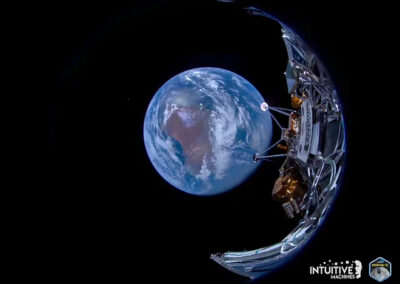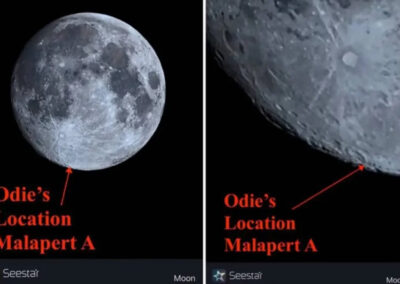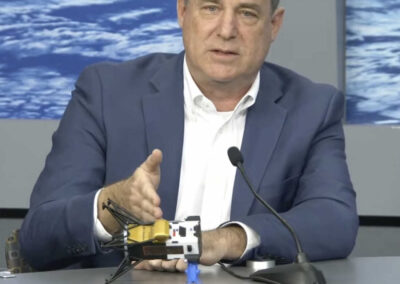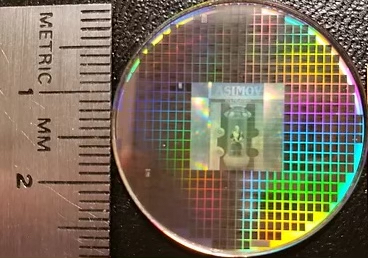Codex Nova
Feb. 22, 2024 – Permanent Installation
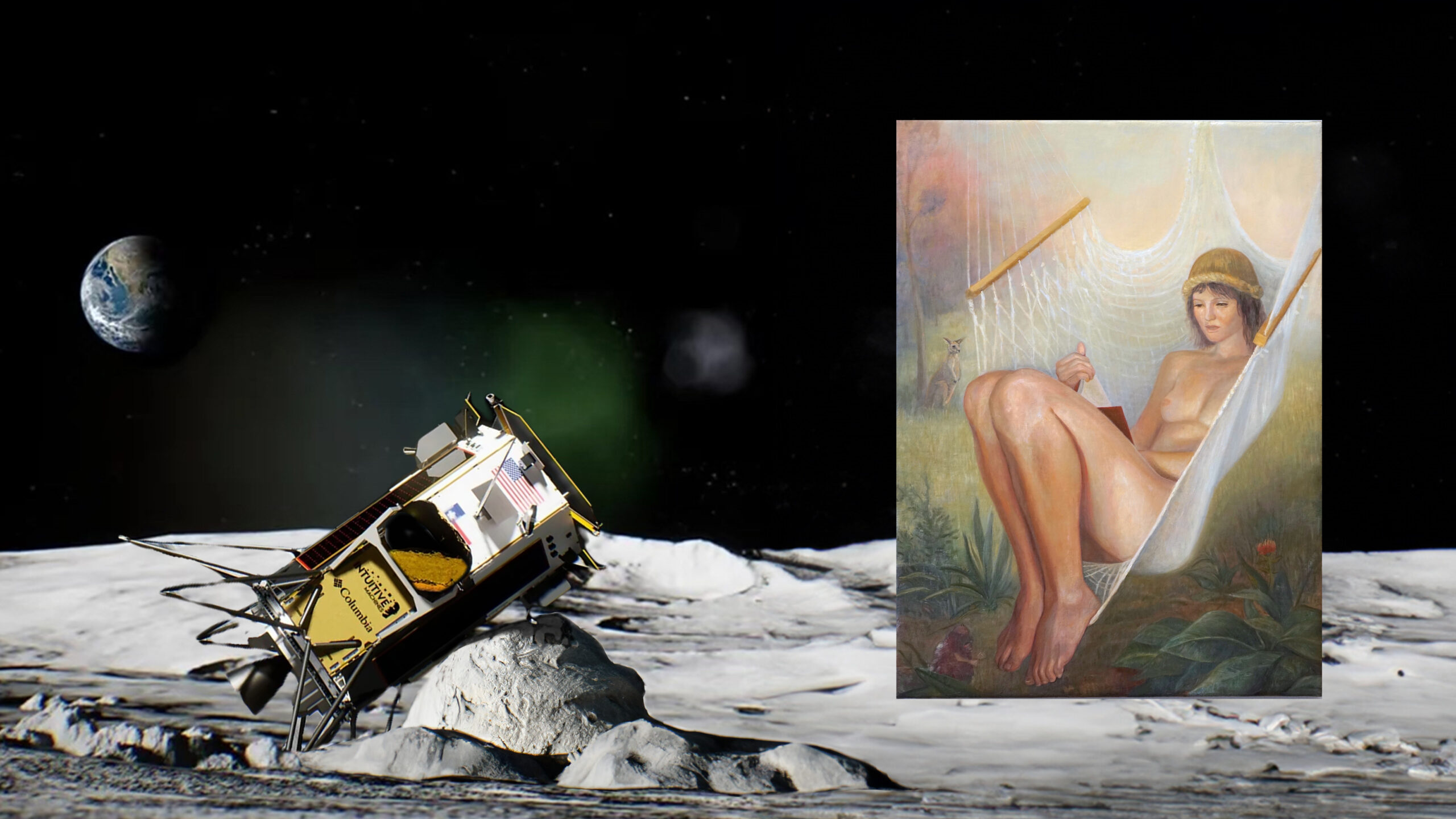
Painting arrives to moon as part of Codex Nova payload.
in Crater Malpert A — Earth’s Moon
An image of David Molesky’s painting Reading Gibbs to the Bush, has reached the Moon’s surface.
The first American-built spacecraft to complete a lunar landing in 52 years has successfully touched down near the Malpert A crater, 190 miles from the south pole at 6:23 PM ET (2323 UTC) on 2/22/2024. The Odysseus NOVA-C, nicknamed Odie, is a 14 ft. tall hexagonal cylinder craft designed by Intuitive Machines based in Houston that reached the lunar orbit aboard a Space X Falcon 9 Rocket launched from Kennedy Space Center. No actual images have surfaced from Odie, but the data coming in suggests it tripped during landing and is resting on its side supported by a rock. (That’s better than the Japanese craft that landed on its head months earlier.)
In addition to scientific instruments that will look for water and pave the way for human colonization on the moon, Odysseus also carried the Codex Nova — a time capsule of paintings and writings curated by Toronto-based science fiction writer and physicist, Samuel Peralta. This cultural payload is recorded at 200,000 dpi on nickel NanoFiche, the highest density storage media with a near-zero degradation factor, earning it the title “million year archive.”
“The Odysseus – including all payloads-is now a Artemis Accords Heritage Site.
All artwork on Codex Nova is now part of the designated heritage of humanity, to be preserved for posterity. One of the tenets of the Artemis Accords, signed by 36 countries to date, is that of heritage preservation. Under article 6, signatories have committed to preserving humanity’s outer space heritage – specifically sites with historic significance such as human or robotic landing sites, artifacts, spacecraft, and other evidence of human activity on other celestial bodies.” – Dr. Samuel Peralta.
The Peregrine Lunar lander, carrying an image of the banana painting titled “Aparche,” burned up in the atmosphere in January. This payload is backed up in the upcoming Serenity mission in August 2024 and again in Polaris.




